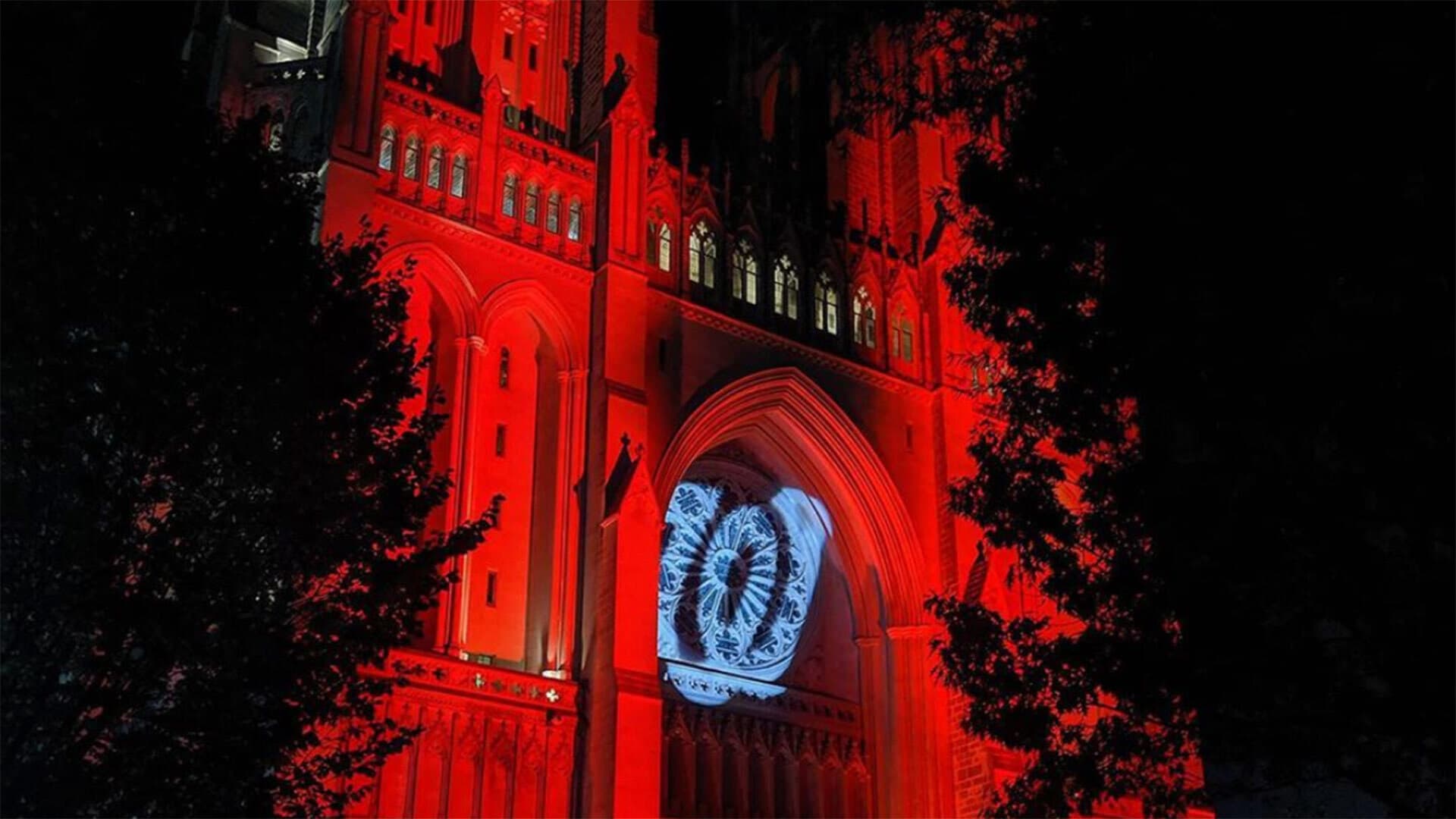Reflecting Success
As Nats Fight to Pull Off World Series Upset, Smith Professor Explains Impact on D.C.
By Liam Farrell

Photo via Washington National Cathedral Instagram
As the Nationals sailed through the playoffs, signs of growing hometown team pride have spread across D.C., including at Washington National Cathedral.
For a city so historically inept at baseball that it inspired a novel and musical about a fan willing to sell his soul for a chance at the pennant, the Washington Nationals may be flipping the script.
With a World Series victory, along with the players themselves, the local economy will be a winner as the denizens of D.C. and neighboring Maryland and Virginia start celebrating, said Hank Boyd, clinical professor of marketing in the Robert H. Smith School of Business. It’s a phenomenon known by the unfortunate-sounding, but quite positive, term “BIRGing”: basking in reflected glory.
 “If my local team is winning, it bolsters my self-esteem,” he said. “Everyone wants to be part of a winner.”
“If my local team is winning, it bolsters my self-esteem,” he said. “Everyone wants to be part of a winner.”
And if they're the runner-up, the unprecedented season still marks a new level in the team-fan base relationship. As the underdog Nats sailed through the playoffs, signs of the growing hometown team pride have been popping up everywhere, from decorative Halloween skeletons covered in Nats gear, to a local bakery selling “dough-Nats,” and the viral video of the National Symphony Orchestra French horn section playing the kid earworm and unofficial team anthem, “Baby Shark.”
Though the Washington Senators reached the World Series three times in the 1920s and ’30s, winning the championship in 1924, their general ineptitude inspired the musical “Damn Yankees” and the famous quip that Washington is “first in war, first in peace and last in the American League.”
Not one, but two teams left Washington to become other franchises (the Minnesota Twins and the Texas Rangers), and there was a more than 30-year gap before the Nationals (formerly the Montreal Expos) arrived in 2005. Though they had made the playoffs four times already in this decade, this is the first time the Nationals even won a series, let alone the title.
That newfound success will translate most concretely into increased sales of Nationals merchandise, demand for tickets and patronage for the businesses around Nationals Park, Boyd said.
“There’s a multiplier effect post-win,” he said.
But the more important long-term dynamic is how the current Nationals team is reinventing its culture for the 21st century. Instead of being tagged with legendary bungling, Washington is now the fun-loving and successful franchise fueled by dugout dances.
“You are building the brand culture about what it means to be a Nats fan,” Boyd said.
Sustaining success—unlike, say, the Miami Marlins, who followed up a 2003 World Series win with a downward spiral of losing and low attendance—will be imperative to avoid a slide back, particularly in grooming future fans who may have missed this World Series. Otherwise, Boyd said, you’re going to see the more onomatopoeically appropriate flipside of BIRGing: “CORFing,” short for cutting off reflected failure.
While the city has reveled in a good sports run recently—the Capitals’ Stanley Cup win in 2018 created a days-long, D.C.-wide party, and the Mystics clinched their first WNBA title just a few weeks ago—the Nationals only have to gaze at the local professional football team that went from regularly contending for and winning Super Bowls to struggling to fill its stadium as an example, Boyd said, of how people “don’t want to be tainted with failure.”